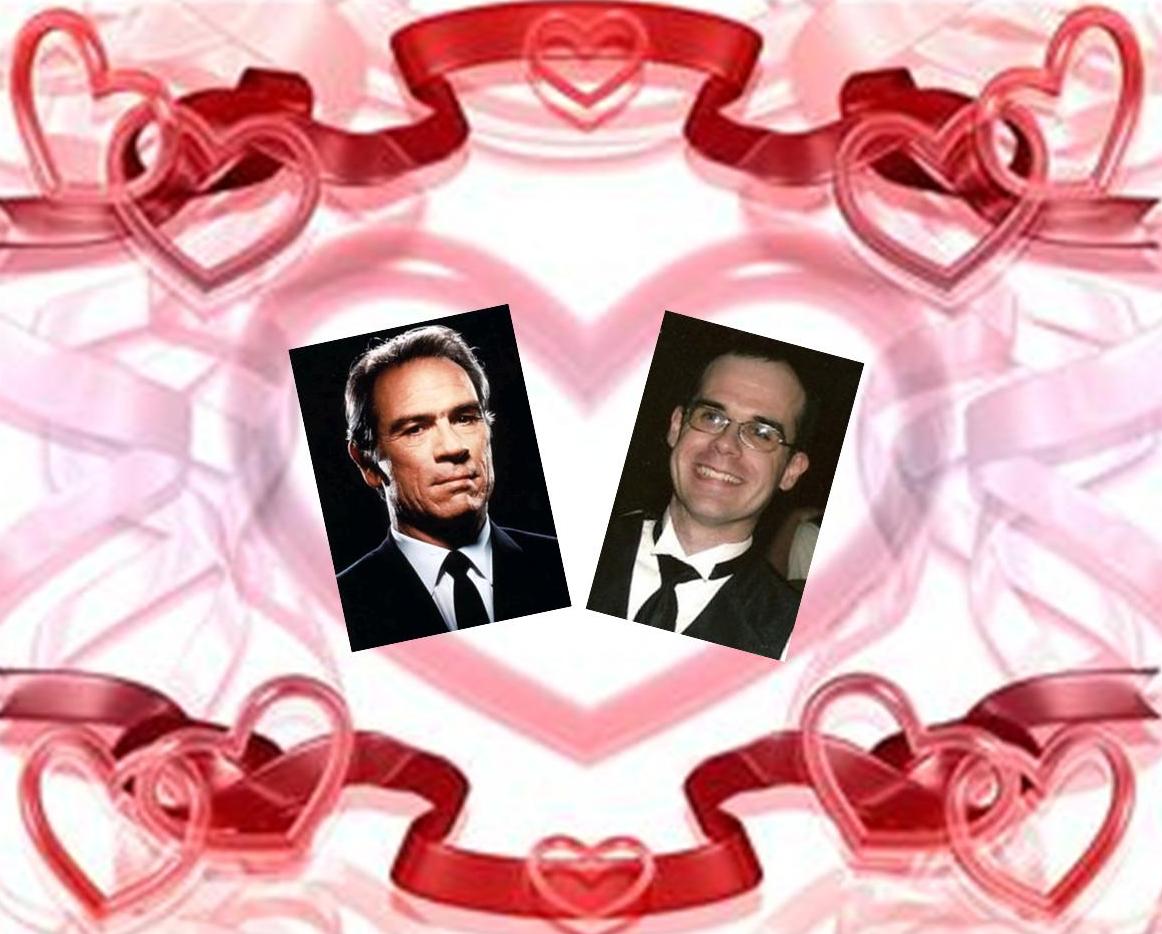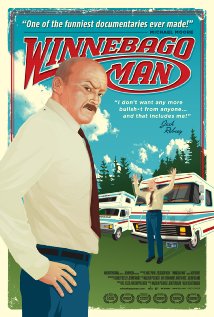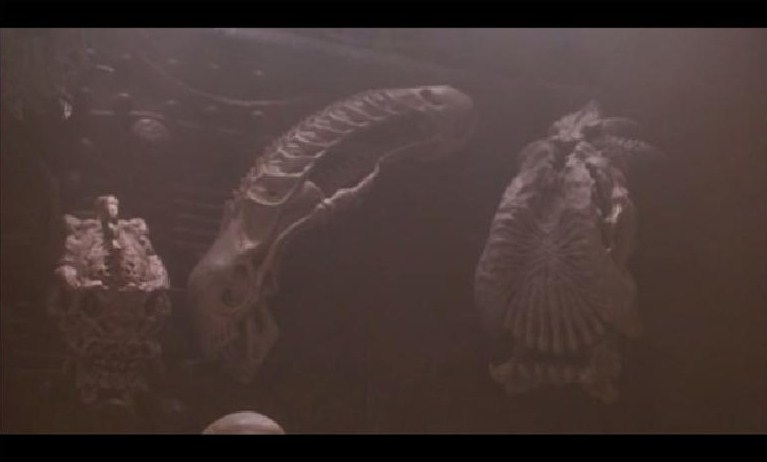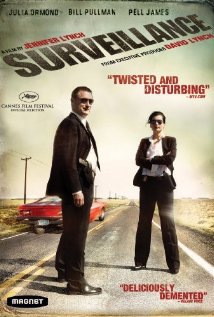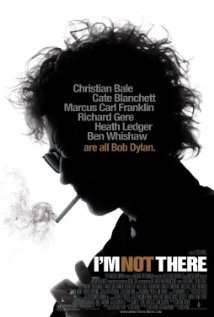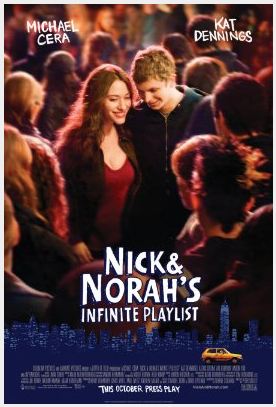Starring: Kurt Russell, Vanessa Ferlito, Zoe Bell, Rosario Dawson
Directed by: Quentin Tarantino
“Death Proof” starts out quite differently. Instead of just throwing you in to the scrum, it starts out in a car with three lovely young ladies discussing their plans for the evening. Sticking close to the “heavily-worn print of a film” theme there are some terrible jumps interrupting large portions of dialogue, grainy footage, and even a little poor audio thrown in. After they talk about their plans for the evening they talk about their plans some more. Then a little more. And after that, a little more. Then they go to a bar and drink some margaritas. The film takes a while to get going.
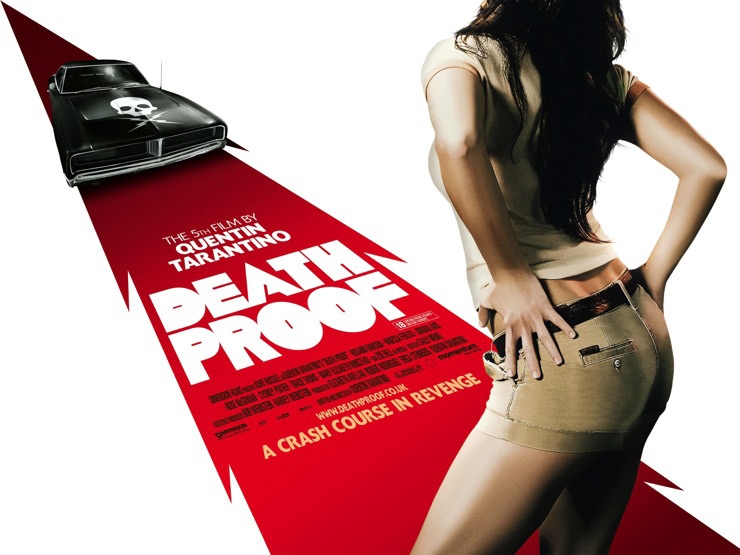 The direction/cinematography incorporates a lot of color, but still distinctly 70s, sticking to the same formula as “Planet Terror.” Lots of orange/brown/red/with flecks of green. The sets are made to look like the 70s, with vintage posters everywhere, pinned on bar walls laden with faux-wood paneling. The clothes the characters are wearing are 70s-ish as well -- daisy dukes and ultra small t-shirts with the colored stripes around the neck and sleeves. The direction itself is actually very modern with a lot of interesting shots, reminding me something I often forget -- Tarantino is actually quite a good director.
The direction/cinematography incorporates a lot of color, but still distinctly 70s, sticking to the same formula as “Planet Terror.” Lots of orange/brown/red/with flecks of green. The sets are made to look like the 70s, with vintage posters everywhere, pinned on bar walls laden with faux-wood paneling. The clothes the characters are wearing are 70s-ish as well -- daisy dukes and ultra small t-shirts with the colored stripes around the neck and sleeves. The direction itself is actually very modern with a lot of interesting shots, reminding me something I often forget -- Tarantino is actually quite a good director.
There is, however, one small flaw in the film: Nothing ever happens. Ever. When it was released separately of “Planet Terror”, it was re-edited and given a 114 minute playing time. That’s pretty long, especially for an exploitation film. And it seems more like 314 minutes. Waiting for that big action sequence at the end of the “first act?” Well, you’re gonna have to wait 50 minutes, and the scene itself is going to last about a minute and a half. What a pay-off!
What’s weird is ““Death Proof”” itself plays like two separate films. The first film, clocking in at about 55 minutes long, is a sly, winking, well directed homage to exploitation, even if it is a little sluggish. The second film, which is also about 55 minutes long, is an extremely boring, overlong, overstuffed, simply mind-numbingly dull, modern piece of cinema dedicated to stunt people.
The second ““Death Proof”” act starts out the same way as the first, three lovely young ladies in a car, going to pick up a fourth. However, this is just modern cinema. It’s a bright, mid 2007 day, and gone are all the bad edits, scratchy film and interesting colors. The only thing tying this to the first portion of the film is Stuntman Mike (Kurt Russell).
There’s a lengthy conversation about picking up a copy of “Italian Vogue” which is utterly and fascinatingly uninteresting. On the way to wherever they are going, the ladies spend six minutes in a car talking about sex, with the majority of the dialogue based around using the word “fuck” as an adjective, noun, verb, and pronoun. It’s kinda’ like when you used to watch “Smurfs” as a kid. “Hey fuck, could you go fuck me a fuck?”
After this thrilling scene, we are treated to another eight minutes of banal dialogue punctuated with fucks. No lie. It starts out with a three minute long story about falling in to a ditch, punctuated with eleven f-bombs and topped off with the zinger “I resemble that remark.”
“I resemble that remark?” Excuse my French, but what the fuck am I watching?! If I had never heard the joke I wouldn’t think it’s funny, but I have heard it about a thousand times, and this is the big pay-off of the segment. It was, during this scene, I did something I never do while watching a film. I fast-forwarded to the next scene. I’m not proud of it, but I think I am better off for it.
Look, I can’t complain about this portion of the film enough. This same formula is repeated for the next twenty minutes of film, without a single line of engaging dialogue. This isn’t an exaggeration. All of this seems like something Kevin Smith would write. Forty years from now. After a stroke-induced coma. It’s boring, it’s repetitive, it’s uninteresting, and it isn’t even vaguely humorous.
The whole crux of the “second act” is the last 15 minutes of film where an honest-to-god action piece takes place. Zoe Bell (a real-life stunt person playing herself) convinces Kim (Tracie Thoms) to drive her around at startlingly fast speeds while she hangs out strapped to the hood of a car by a pair of belts. This movie is so lazy it can’t even invent a reason to have an action scene besides stunt people, even when they aren’t performing stunts, like to do stupid shit that put their lives in danger.
Eventually Stuntman Mike, in his car, attacks the three girls, in their car. There are actual stunt people hanging off vehicles whilst cars bang violently in to one another. In a time and place where most action sequences revolve around CGI, this is a breath of fresh air.
For about two minutes. Then it turns in to an action sequence mirroring the repetitive dialogue sequences from earlier. The cars crash in to each other repeatedly. The girls scream ad nauseam. They finally get Zoe Bell off the hood of the car. They go after Stuntman Mike. Stuntman Mike screams ad nauseam. And the girls, believe it or not, repetitively use the words “fuck” and “motherfucker,” until you want to tear your ears off.
Maybe I would be less critical of this film if it wasn’t part of a “grindhouse” double feature, but when I think of a modern exploitation film I think of tongue-in-cheek violence, ironic humor and, most of all fun. This film doesn’t satisfy any of those criteria.
Written by Ryan Venson
 Karol (Zbigniew Zamachowski) is having a really bad day. He has a summons to appear at court, gets splattered by an errant pigeon on his way to the courtroom, and then his wife divorces him for failure to consummate the marriage. Struggling through the proceedings with a translator because the Polish Karol does not speak strong French, shamed by his ex-wife (who says she doesn’t love him anymore because he couldn’t get it up after they were married) and denied his request for more time, Karol is – no pun intended – screwed.
Karol (Zbigniew Zamachowski) is having a really bad day. He has a summons to appear at court, gets splattered by an errant pigeon on his way to the courtroom, and then his wife divorces him for failure to consummate the marriage. Struggling through the proceedings with a translator because the Polish Karol does not speak strong French, shamed by his ex-wife (who says she doesn’t love him anymore because he couldn’t get it up after they were married) and denied his request for more time, Karol is – no pun intended – screwed.

